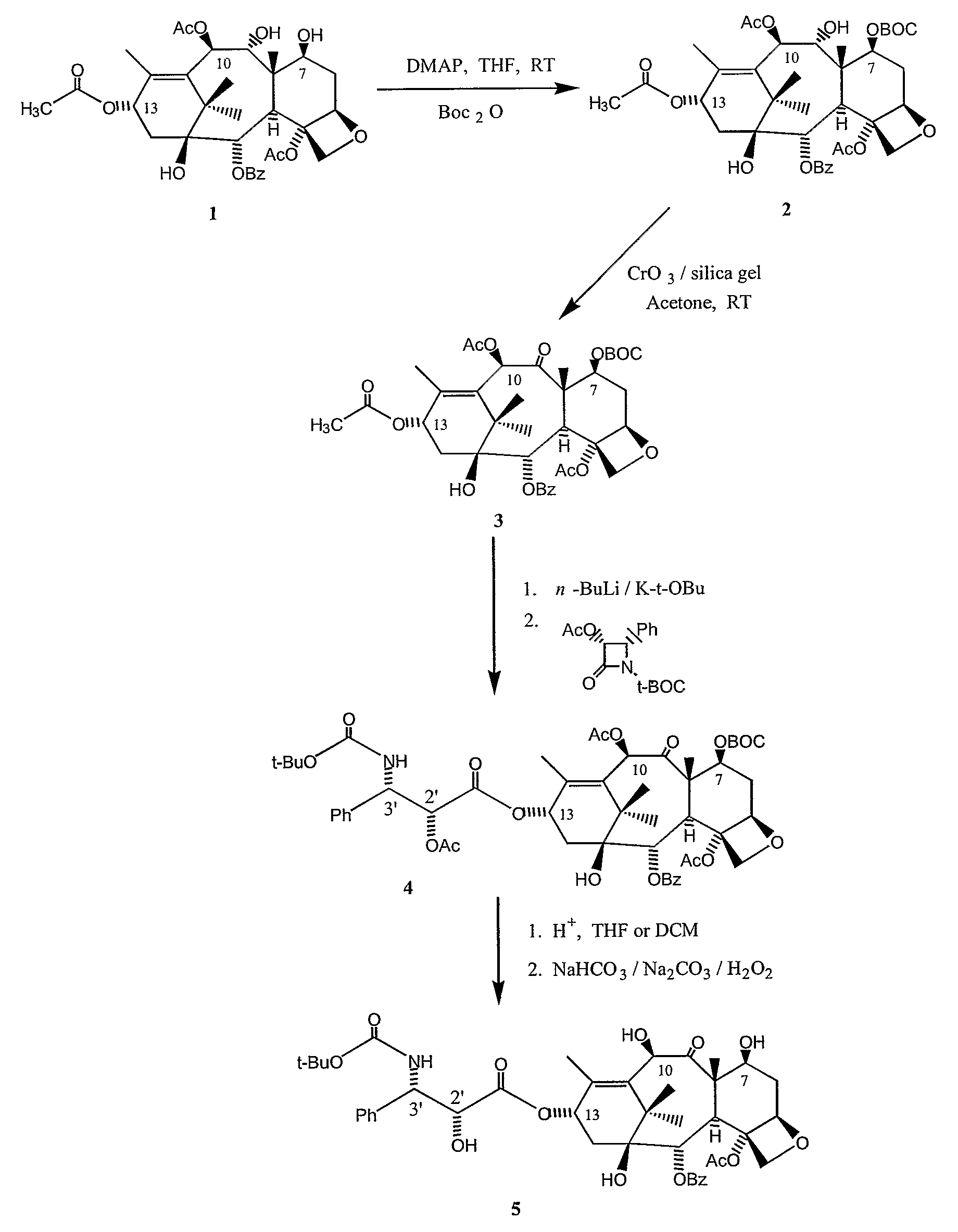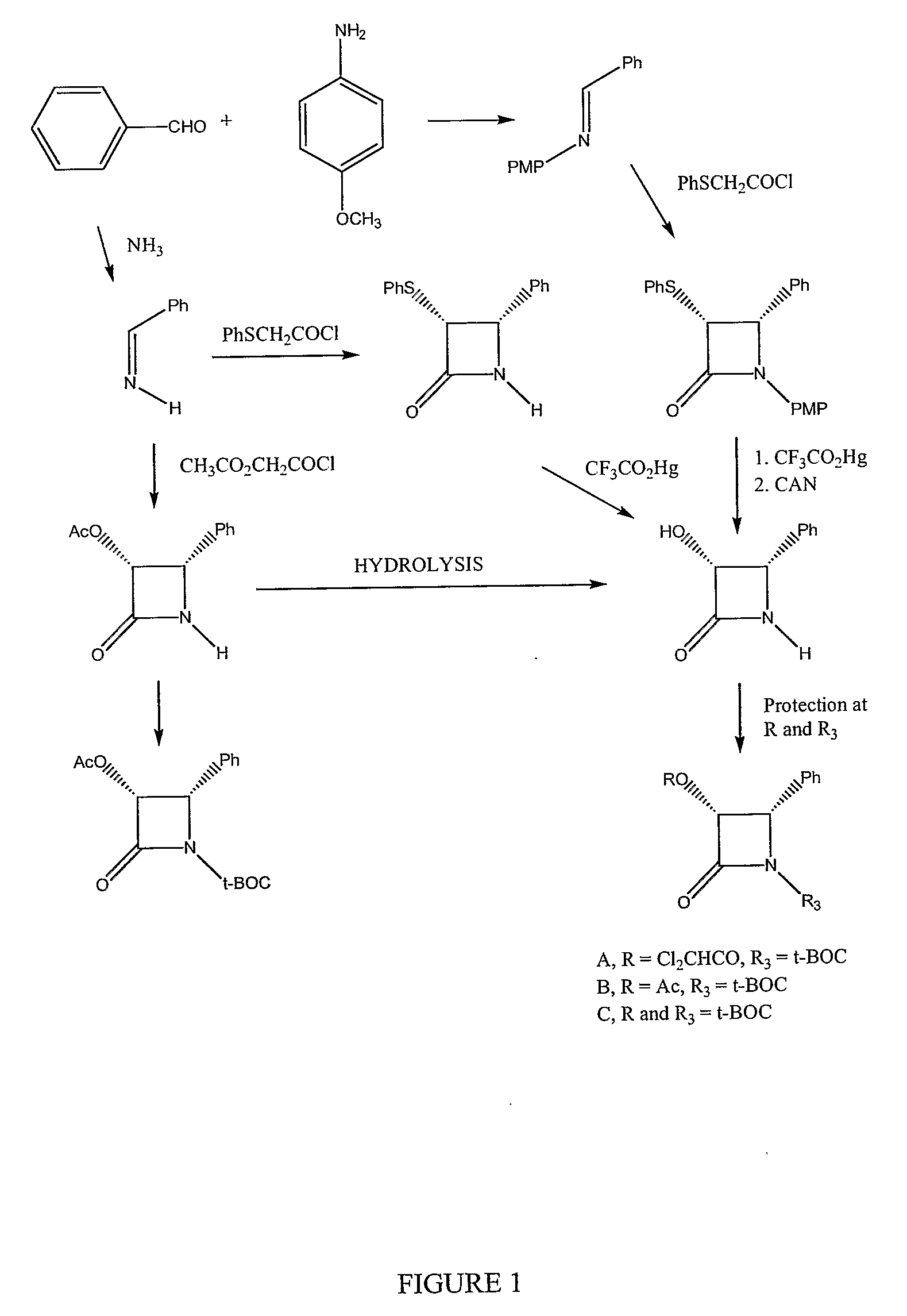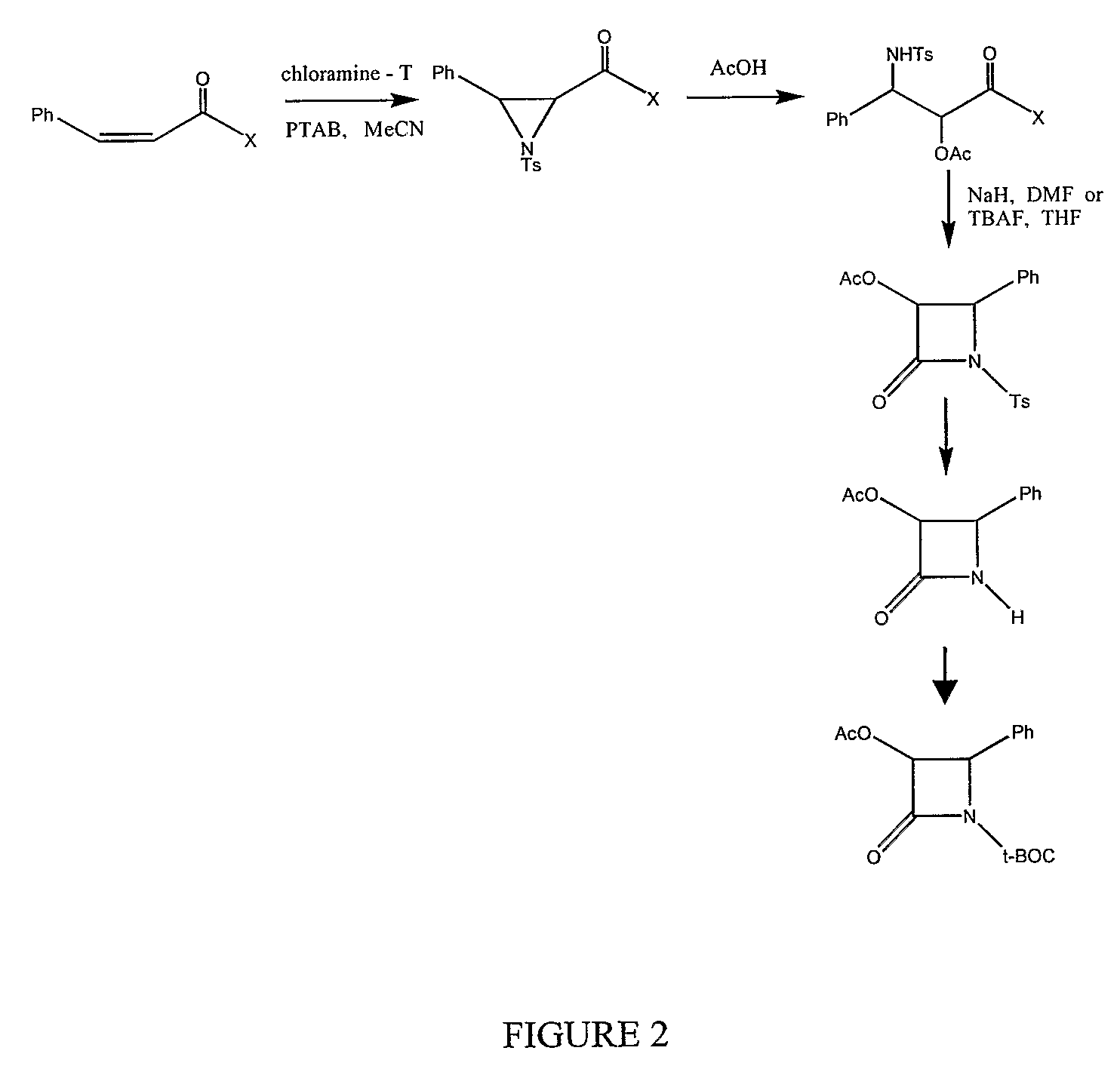Semi-Synthesis of Taxane Intermediates and Their Conversion to Paclitaxel and Docetaxel
a technology of intermediates and taxanes, applied in the field of semi-synthesis of taxanes, can solve problems such as structural complexity of taxanes
- Summary
- Abstract
- Description
- Claims
- Application Information
AI Technical Summary
Benefits of technology
Problems solved by technology
Method used
Image
Examples
example 1
PROTECTION OF C-7 HYDROXY GROUP
[0113]As shown in FIG. 3, a stirred solution of 9-dihydro-13-acetylbaccatin III (9-DHB), 1, in an organic solvent, such as THF, at room temperature under an argon atmosphere was treated with a hydroxy-protecting agent, such as Boc2O, in the presence of a base, such as 4-(N,N-dimethylamino)pyridine. The reaction was stirred at this temperature for a period between 30 minutes to 1 hour until complete consumption of the starting materials, as evidenced by TLC. The reaction was then worked up as usual, the organic phase was washed with water twice, a saturated aqueous sodium hydrogen carbonate solution and a saturated aqueous sodium chloride solution, and then dried over anhydrous sodium sulfate. Filtration and evaporation of the solvents under reduced pressure yielded a crude first C-7 protected 9-DHB derivative, 2, which was further purified by either column chromatography or crystallization to afford a pure first C-7 protected 9-DHB derivative, 2.
example 2
OXIDATION OF C-9 HYDROXY GROUP
[0114]As further shown in FIG. 3, the first C-7 protected 9-DHB derivative, 2, was dissolved in anhydrous acetone at room temperature and an oxidizing agent, such as chromium (IV) oxide-silica gel, was added to the mixture. After stirring the solution for 30 min to 1 h, or until complete consumption of the starting material, at a temperature in the range of about 20 to 25° C., the reaction mixture was filtered through a pad of a filtering agent, such as silica gel or celite. Evaporation of the solvent yielded a crude second C-7 protected 13-acetylbaccatin III derivative, 3, which could be used in the following synthetic step or could be further purified by either column chromatography or crystallization to afford a pure second C-7 protected 13-acetylbaccatin III derivative, 3.
example 3
CLEAVAGE OF C-13 ESTER LINKAGE AND ATTACHMENT OF A BETA-LACTAM SIDE CHAIN IN ONE POT
[0115]As further shown in FIG. 3, to a solution of the second C-7 protected 13-acetylbaccatin III derivative, 3, in an organic solvent, such as freshly distilled THF, under argon atmosphere at −40 to −50° C., was added dropwise a solution of a base, such as n-BuLi, in hexanes or a mixture of n-BuLi / K-t-OBu. After stirring for 30 min to 1 hr at this temperature, a solution of a beta-lactam in anhydrous THF was added dropwise to the mixture. The solution was slowly warmed to 0° C. and kept at that temperature for an additional 1 to 3 hrs, or until complete consumption of the starting material, as evidenced by TLC, before addition of a solution of an acid in an organic solvent, such as 10% AcOH in THF. The mixture was then partitioned between saturated aqueous sodium hydrogen carbonate and mixtures of dichloromethane and ethyl acetate. Evaporation of the organic layer yielded a crude C-13 beta-lactam pr...
PUM
| Property | Measurement | Unit |
|---|---|---|
| temperature | aaaaa | aaaaa |
| temperature | aaaaa | aaaaa |
| temperature | aaaaa | aaaaa |
Abstract
Description
Claims
Application Information
 Login to View More
Login to View More - R&D
- Intellectual Property
- Life Sciences
- Materials
- Tech Scout
- Unparalleled Data Quality
- Higher Quality Content
- 60% Fewer Hallucinations
Browse by: Latest US Patents, China's latest patents, Technical Efficacy Thesaurus, Application Domain, Technology Topic, Popular Technical Reports.
© 2025 PatSnap. All rights reserved.Legal|Privacy policy|Modern Slavery Act Transparency Statement|Sitemap|About US| Contact US: help@patsnap.com



